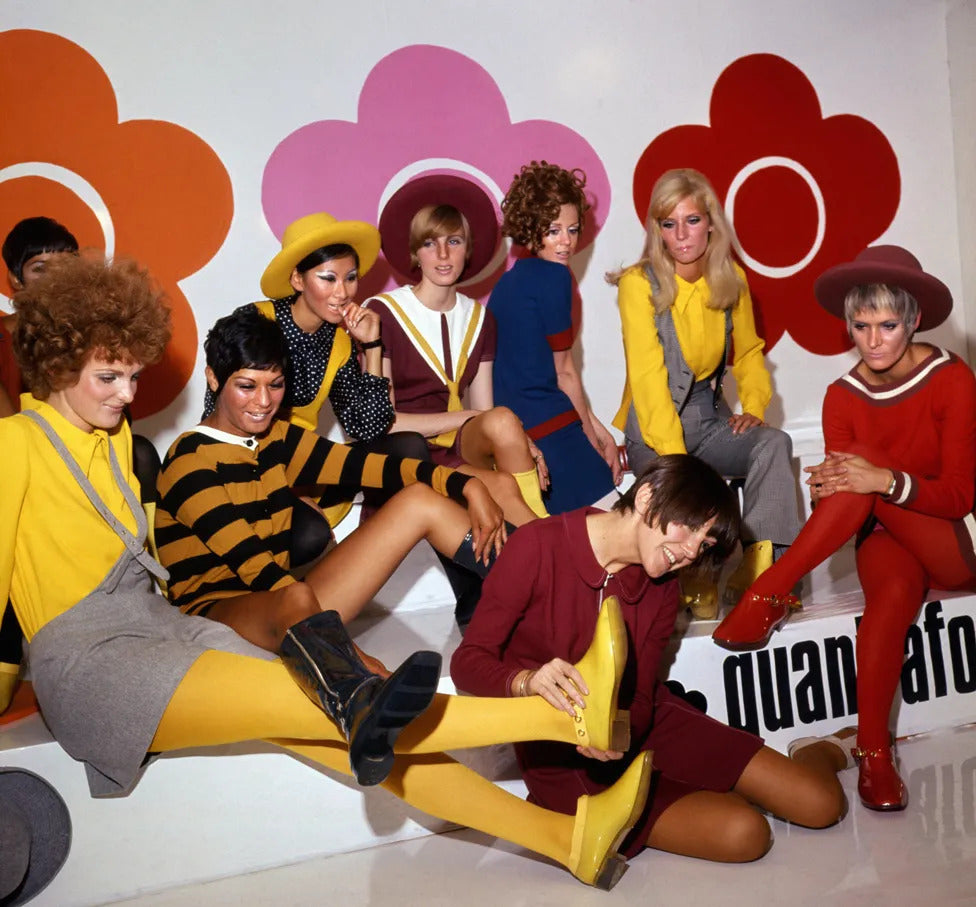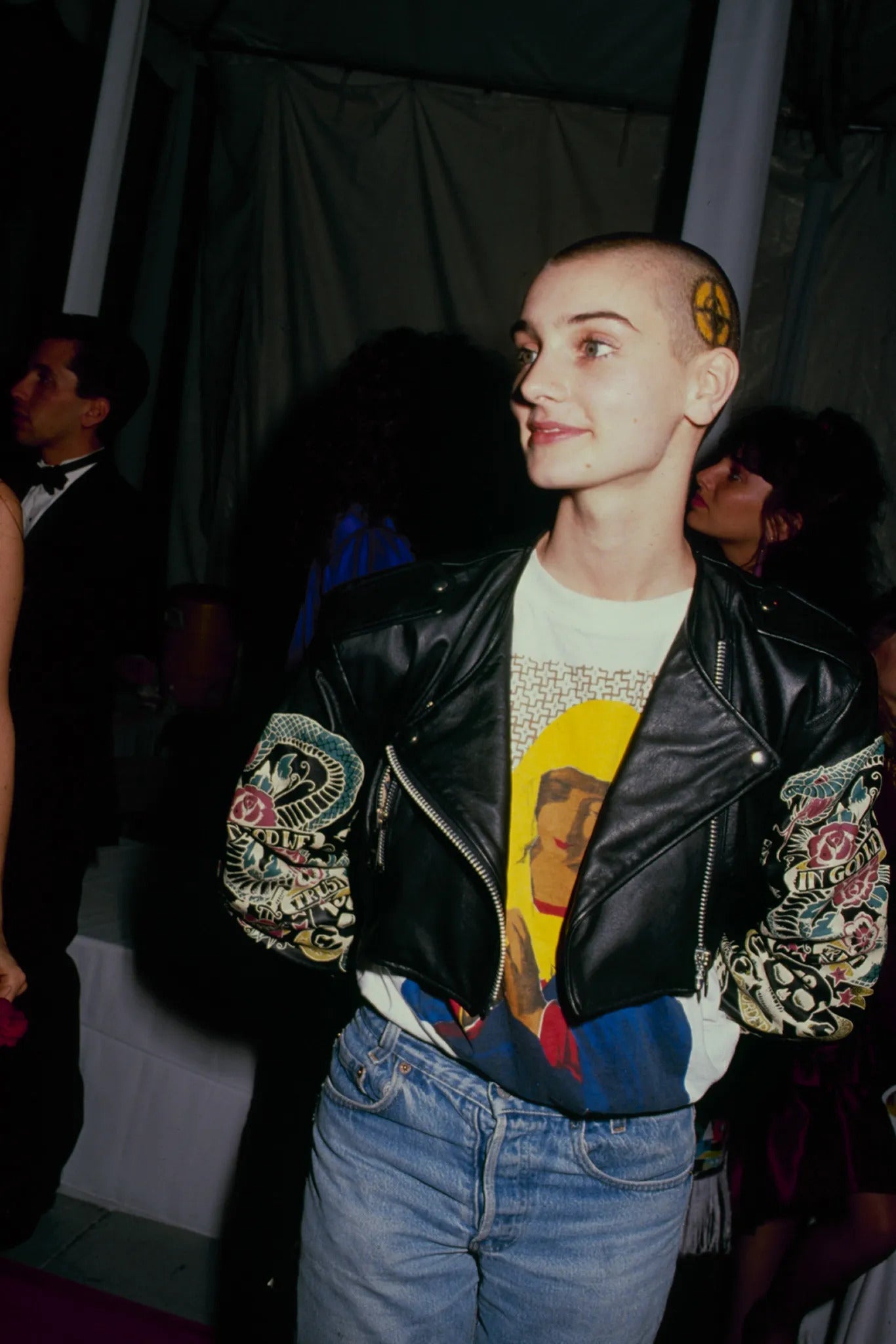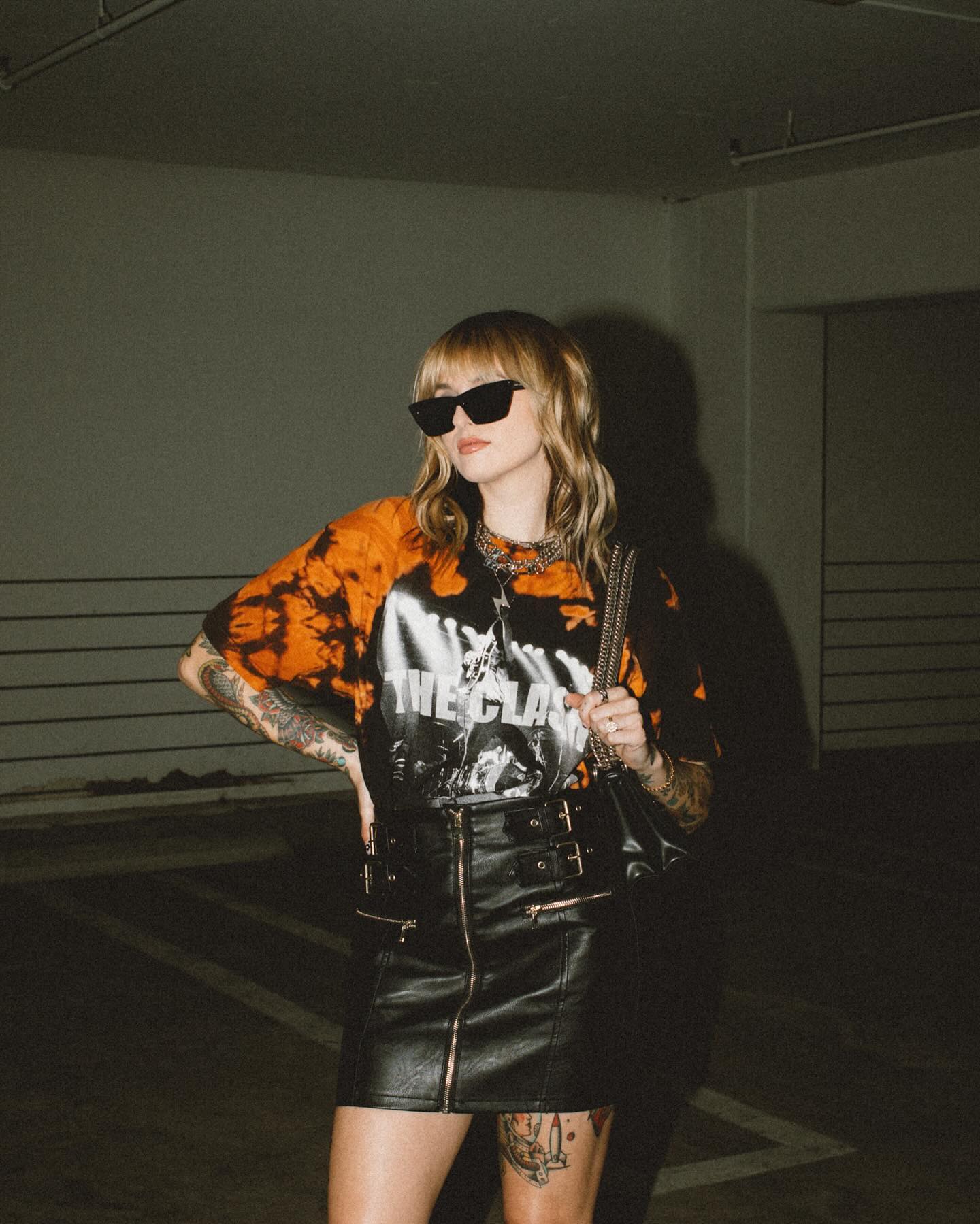Women's Alternative Fashion Evolution: Celebrating March 8
As we approach International Women's Day on March 8, it's a prime opportunity to weave through the intricate and colorful threads of women's alternative fashion. This is not merely a retrospective on evolving trends; it's an odyssey that maps the seismic shifts in women's societal roles and perceptions, intricately narrated through their bold fashion choices. Women's alternative fashion, with its roots in defiance and divergence from the mainstream, has been a significant player in this narrative, embodying protest, autonomy, and a vibrant platform for showcasing individual and group identities.
This journey is an exploration of how clothing transcends mere aesthetic appeal, becoming a potent emblem of empowerment, rebellion, and self-expression. It's a homage to the renegades of style, those who have cloaked themselves in garments that defy conventional norms, challenging the status quo and redrawing the boundaries of accepted fashion. From the audacious flapper dresses of the 1920s that challenged post-Victorian modesty to the punk era's visceral scream against conformity through distressed fabrics and bold statements, women's alternative fashion has consistently mirrored the zeitgeist, capturing the essence of the feminist struggle and the evolving dialogue around femininity and power.
As we pay tribute to International Women's Day, let's embark on a unique exploration of the rich, rebellious tapestry of women's alternative fashion. This is a celebration not just of fashion as an art form but of its enduring role as a medium of resistance, a canvas for societal commentary, and a tribute to the relentless spirit of women who have dared to use their wardrobes as weapons of change and platforms of expression.
The Roaring 20s and the Flapper Revolution

The 1920s heralded an era of unprecedented social and cultural transformation, epitomized by the rise of the flapper dress—a radical departure from the constrictive fashions of yesteryears. This era wasn't merely a shift in style; it was a bold declaration of autonomy, a rebuke of traditional femininity, and a vibrant celebration of newfound freedoms. The flapper dress, with its daringly shorter hemlines and relaxed silhouette, became the emblem of the 20s' "new woman"—independent, fearless, and resolute in challenging societal conventions.
This pivotal moment in fashion history was a mirror of the sweeping changes in society. The flapper dress transcended its role as attire to become a symbol of liberation, a visual representation of women's burgeoning desire for self-determination and equality. By embracing this style, women of the 1920s were not merely changing their wardrobes; they were staking a claim for their place in the public sphere, signaling a departure from the passive roles assigned to them and moving towards an assertion of their rights and desires.
The significance of the flapper dress lay in its defiance. It was a rejection of the restrictive corsets and long skirts that had symbolized women's repression, embodying instead the spirit of the Jazz Age—freedom, frivolity, and a break from the past. Women who wore these dresses were making a statement louder than any words could convey; they were the vanguards of a social revolution, dancing to the rhythm of change and laying the groundwork for forthcoming generations to continue the fight for gender equality.
The flapper phenomenon was more than a fashion trend; it was a cultural movement that encapsulated the exhilarating spirit of the Roaring Twenties. It marked the emergence of a new archetype of womanhood, one characterized by boldness, assertiveness, and the refusal to be bound by outdated norms. The legacy of the flapper era is a testament to the transformative power of fashion as a medium of expression and resistance, celebrating the enduring quest for freedom and equality that continues to inspire women around the globe.
As we reflect on this remarkable chapter in history, the flapper dress stands as a beacon of progress, a reminder of the strides made toward women's emancipation, and a symbol of the timeless courage that propels society forward. The Roaring Twenties and its flapper iconography continue to resonate, not just as a significant evolution in fashion but as a milestone in the ongoing journey toward gender parity and self-expression.
The Swinging 60s and Mod Fashion

The 1960s burst onto the cultural scene with a vivid explosion of color, pattern, and silhouette, marking the dawn of the mod fashion movement. This era, defined by its daring geometric patterns, audacious mini skirts, and a palette of eye-popping colors, became synonymous with a generation's quest for liberation and a departure from the conservative norms of the past. At the heart of this sartorial revolution was Mary Quant, a visionary designer whose creation of the mini skirt became a powerful symbol of female empowerment and autonomy.
Mod fashion was more than merely a trend; it was a reflection of a society in the throes of transformation. The mini skirt, with its radical departure from the longer hemlines of previous generations, did not merely alter the landscape of fashion; it challenged the prevailing attitudes toward women's bodies, sexuality, and independence. Mary Quant, in democratizing this daring new style, encouraged women to assert control over their own bodies and to celebrate their freedom with confidence and flair.
The 1960s were also a pivotal era for the women's liberation movement, and the parallel between these social changes and the bold, defiant styles of mod fashion was unmistakable. The movement's calls for equality and autonomy found an echo in the fashion world, where the rejection of traditional dress codes went hand in hand with the rejection of traditional gender roles. Women, adorned in mini skirts, geometric prints, and vibrant colors, were not just making a statement about fashion; they were embodying the spirit of rebellion and change that defined the decade.
Mod fashion, with its clean lines, futuristic influences, and emphasis on individuality, mirrored the era's optimism and belief in progress and innovation. It was a visual manifestation of the swinging sixties' ethos, encapsulating the youthful energy, the push for social change, and the breaking down of old barriers that characterized the period. The movement was not just about changing how women dressed; it was about changing how women were perceived and how they perceived themselves.
As we look back on the swinging sixties and the mod fashion revolution, we celebrate not only the aesthetic innovations of the era but also its contribution to the broader narrative of women's rights and empowerment. The legacy of mod fashion and its defining elements—the mini skirt, the bold patterns, and the vibrant colors—remains a testament to a time of groundbreaking change, symbolizing the enduring link between fashion and social progress.
Punk Rock Rebellion and Feminist Statements

Between the 1970s and 1980s, the punk rock movement erupted as a seismic force of cultural defiance, carrying with it a distinct mode of self-expression that challenged the very fabric of societal norms. This era witnessed women in the punk scene adopting fashion as a formidable weapon in their arsenal against conformity, donning leather jackets, ripped tights, and band tees not merely as items of clothing but as symbols of resistance. Leading this sartorial rebellion was none other than Vivienne Westwood, a visionary whose designs became synonymous with punk's anarchic spirit, melding fashion with fervent political and feminist ideologies.
Punk fashion was inherently provocative, a visual assault on traditional aesthetics that sought to disrupt the status quo. The use of unconventional materials, deliberate distress, and a collage of symbols and slogans transformed clothing from mere attire to a powerful medium of communication. Women in punk were not just participants in a music subculture; they were active agents of change, utilizing fashion to articulate their frustrations, aspirations, and demands for a society that often sought to silence them.
Vivienne Westwood's creations were pivotal in this movement, embodying the essence of punk's challenge to authority and convention. Her designs were more than just garments; they were statements of intent imbued with messages of empowerment and equality. Through her work, Westwood emphasized that fashion could serve as both a mirror to societal injustices and a hammer with which to shape a new reality. Her influence extended beyond the confines of the punk scene, inspiring a generation to view clothing as a conduit for personal and political expression.
The punk movement's contribution to the discourse around gender and identity was profound. By embracing a style that was as confrontational as it was distinctive, women in punk refused to be categorized or constrained by traditional gender norms. Their fashion choices were a declaration of autonomy, a rejection of the passive femininity prescribed by mainstream culture, and an assertion of their right to define their own identity.
As we reflect on the legacy of the punk rock rebellion and its intertwined relationship with feminist statements, it's clear that the movement was a critical juncture in the evolution of fashion as a form of protest. The leather jackets, ripped tights, and band tees of the punk era were not just clothing; they were armor in the fight against oppression, emblematic of a period that dared to imagine a different world. Through the lens of punk fashion, we see not just a style but a story of resistance, resilience, and the enduring power of clothing as an act of defiance.
The Riot Grrrl Impact of the 90s

The 1990s witnessed the emergence of the Riot Grrrl movement, a revolutionary blend of punk rock's raw energy and the nuanced perspectives of third-wave feminism. This movement marked a significant chapter in the history of feminist activism, where fashion became a potent vehicle for expressing solidarity, dissent, and a fierce demand for gender equality. The emblematic style of the Riot Grrrls—slogan tees, combat boots, and an embrace of DIY culture—was not merely a fashion statement but a manifesto worn on the body, challenging societal norms and empowering women to reclaim their narratives.
Riot Grrrl fashion was as much about political statements as it was about personal identity. The movement's foundational use of slogan tees served as a canvas for messages of resistance, calls to action, and feminist slogans, transforming everyday clothing into a mobile billboard for activism. Combat boots stomped over the delicate expectations of femininity, symbolizing strength, resilience, and the readiness to stand their ground in the face of sexism and discrimination.
The DIY ethos at the heart of Riot Grrrl fashion celebrated creativity and individuality, encouraging women to take control of their own representations. This approach to fashion was liberating; it invited women to engage directly with the materials of their expression, repurposing, redesigning, and reclaiming clothes as their own. This hands-on engagement with fashion served as a metaphor for the broader goals of the movement, emphasizing autonomy, self-reliance, and the reclamation of female identity from the clutches of a patriarchal society.
The impact of the Riot Grrrl motion on the landscape of feminist activism and fashion was profound. By intertwining style with substance, Riot Grrrls demonstrated that fashion could be a powerful form of protest, a means of building community, and a way to visually articulate complex issues like sexism, body shaming, and gender inequality. The movement's legacy lies not just in its contribution to the tapestry of feminist thought but in its reimagining of fashion as an arena for activism, where the personal is indeed political.
Reflecting on the Riot Grrrl movement of the '90s, we see a vivid example of how fashion can transcend the boundaries of mere aesthetics to become a tool for social change. The slogan tees, combat boots, and DIY creations of this era were not just garments; they were declarations of independence, embodiments of resistance, and vibrant calls to action. Through the lens of Riot Grrrl fashion, we are reminded that clothing can be both a medium for personal expression and a powerful instrument of collective empowerment.
21st Century: The Digital Age and Beyond

From the dawn of the 2000s to the present, the digital age has radically transformed the landscape of fashion, ushering in an era where access to fashion and cultural exchange is limitless. This revolution has not only democratized fashion but has also paved the way for a more diverse and inclusive alternative fashion scene. Today, social media platforms stand at the epicenter of this transformation, serving as vibrant spaces for individuals to showcase their unique styles, challenge entrenched beauty standards, and cultivate communities rooted in acceptance and diversity.
The impact of digitalization on fashion extends far beyond the mere proliferation of trends and styles. It has fundamentally altered the way fashion is consumed, discussed, and created, making it more accessible and inclusive than ever before. Individuals now wield the power to influence and inspire on a global scale, using platforms like Instagram, TikTok, and Pinterest to share their personal narratives and fashion philosophies with a worldwide audience. This shift has led to a more participatory culture in fashion, where the lines between consumers and creators blur, and everyone has the opportunity to contribute to the evolving tapestry of style.
In this new era, alternative fashion has embraced a myriad of movements that reflect the pressing concerns and values of today's society, including sustainability, body positivity, and inclusivity. The digital age has amplified voices calling for a departure from fast fashion, advocating for practices that are environmentally sustainable and ethically sound. Meanwhile, movements centered around body positivity have found fertile ground on social media, challenging conventional notions of beauty and promoting a fashion ethos that celebrates diversity in body shapes, sizes, and appearances.
Moreover, the inclusivity championed by alternative fashion in the digital age has broadened the spectrum of representation, ensuring that fashion is a realm where everyone, irrespective of gender, race, or background, can see themselves reflected. This inclusivity is not just about the garments we wear; it's about recognizing and valuing the myriad ways in which individuals express their identities and experiences through fashion.
As we navigate the 21st century, the intersection of digital technology and fashion continues to evolve, shaping a future where the principles of equality, empowerment, and environmental consciousness are woven into the fabric of the fashion industry. The digital age has not only expanded the horizons of alternative fashion but has also reinforced its role as a powerful medium for social and cultural expression, reflecting the ongoing journey towards a more inclusive, sustainable, and empowering fashion landscape.
Conclusion
The evolution of women's alternative fashion is a testament to the resilience, creativity, and spirit of rebellion that have defined women's journey towards equality and autonomy. Each decade's pivotal fashion moments, coinciding with significant milestones in women's rights, highlight how fashion has been an integral form of protest and expression. As we reflect on this rich history, it's clear that alternative fashion isn't just about the clothes we wear; it's about the stories they tell and the identities they forge.
As we move forward, let's continue to celebrate and embrace the diversity and dynamism of women's alternative fashion. It's more than just a style; it's a statement, a form of activism, and a powerful tool for change. We invite our readers to convey their thoughts, experiences, and how fashion has empowered them. Join the conversation below, and don't forget to follow for more insights into the fascinating world of alternative fashion.
*Credit to 2024 Prom Dresses, blog.needsupply.com, comerblogaramar.com.br for post featured image




